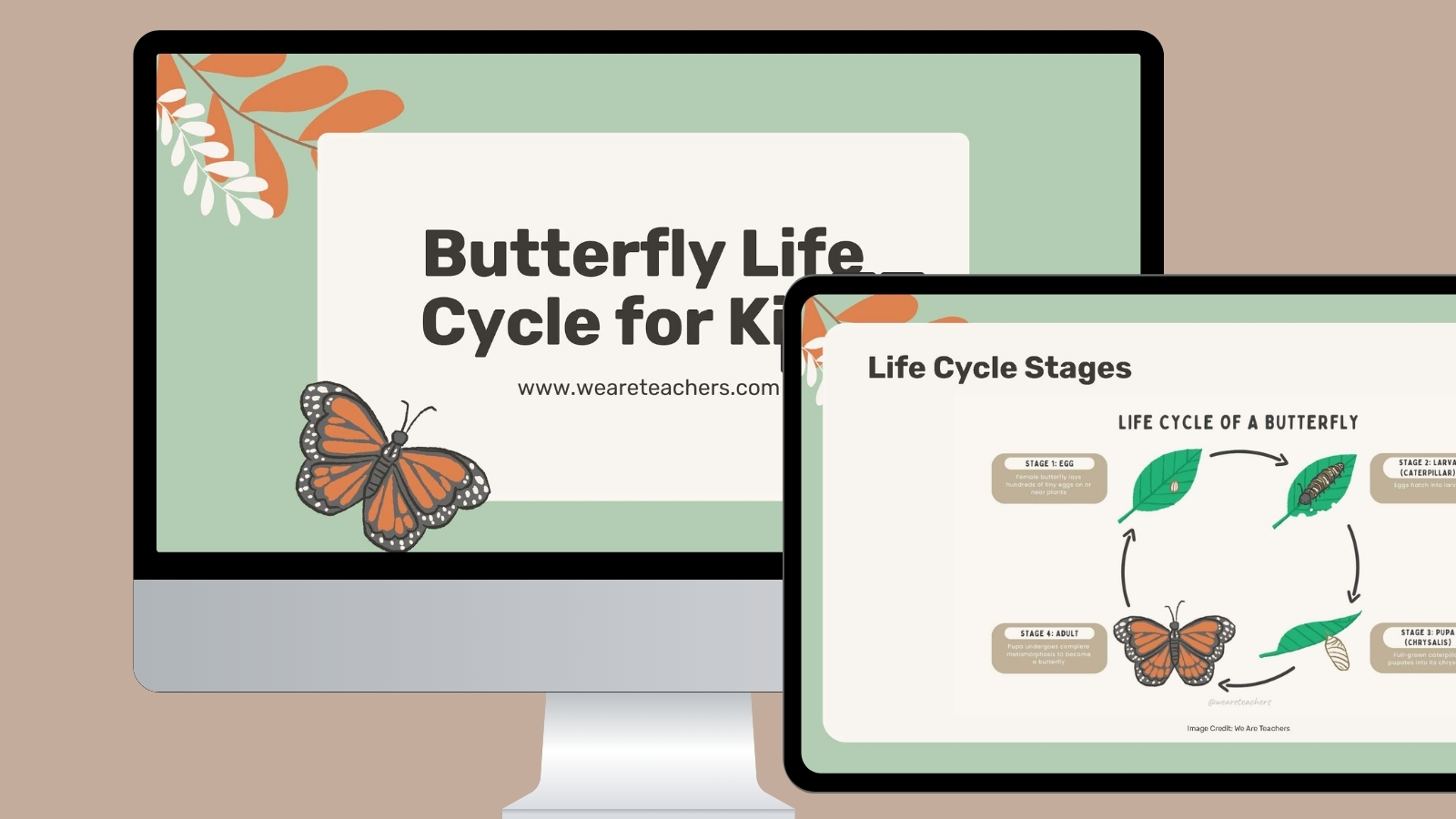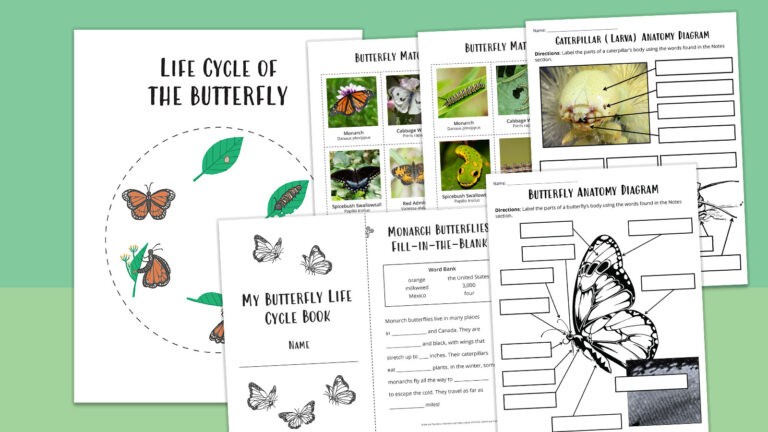The butterfly life cycle is a popular topic in science classrooms, and for good reason. The process of complete metamorphosis never fails to amaze! Here, you’ll find lots of helpful resources for teaching the life cycle of a butterfly to kids, including free Google Slides to share.
Jump to:
- Butterfly Life Cycle Facts
- Life Cycle of a Butterfly Vocabulary Words
- Butterfly Life Cycle Worksheets and Activities
- Videos About the Butterfly Life Cycle
- Butterfly Books for Kids
To get this free set of Butterfly Life Cycle Google Slides featuring all the information below, just fill out the form on this page.
Butterfly Life Cycle Facts
What are the stages of the butterfly life cycle?
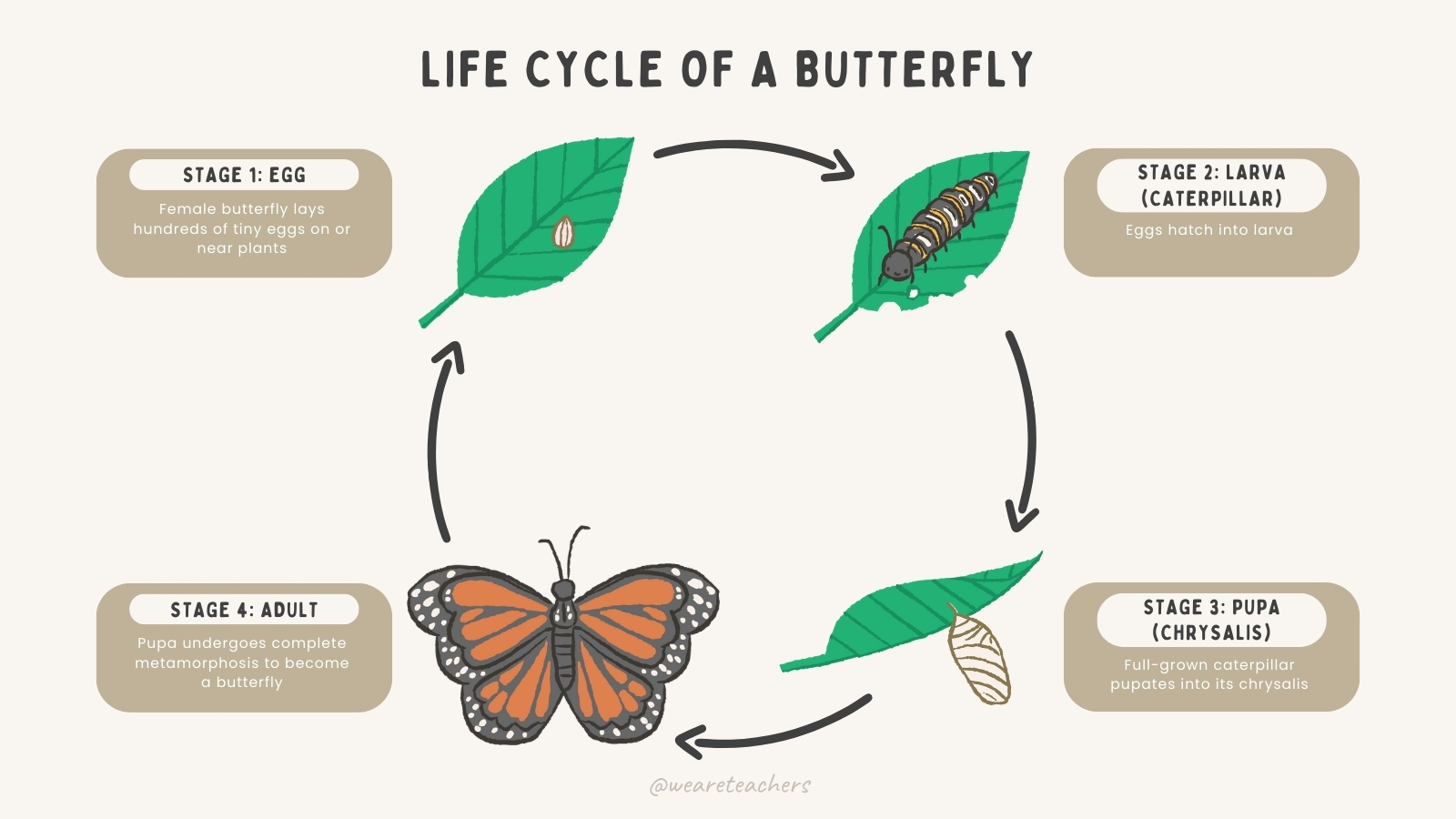
Butterflies undergo complete metamorphosis, changing their initial form to something that looks completely different. This process happens in four stages:
- Egg: Female butterflies lay hundreds of tiny eggs on or near plants.
- Larva: The larva of a butterfly is called a caterpillar. Their only job is to eat and grow.
- Pupa: A full-grown caterpillar pupates into its chrysalis, where it rests as its body undergoes a major change.
- Adult: The adult butterfly, complete with wings, emerges from from the chrysalis. Adult butterflies fly, eat, and mate before they die.
Where do butterflies lay their eggs?
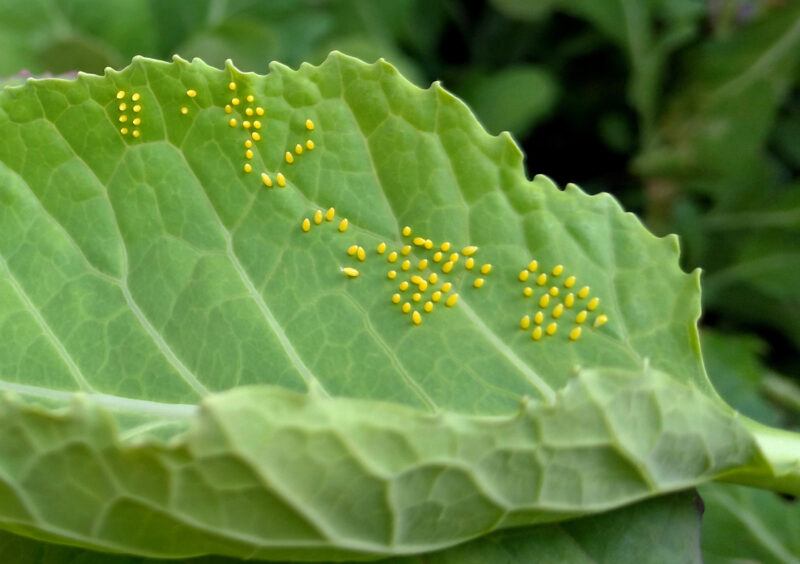
Butterflies usually lay their eggs on or near the plants that their caterpillars will eat when they hatch. One female butterfly lays several hundred eggs. They may lay them individually or in groups.
Butterfly eggs are very small, only about the size of the head of a pin. They can be round or shaped more like a football, hard or soft, and come in a variety of colors. It usually takes about two to five days to hatch into a minuscule caterpillar.
What do caterpillars eat?
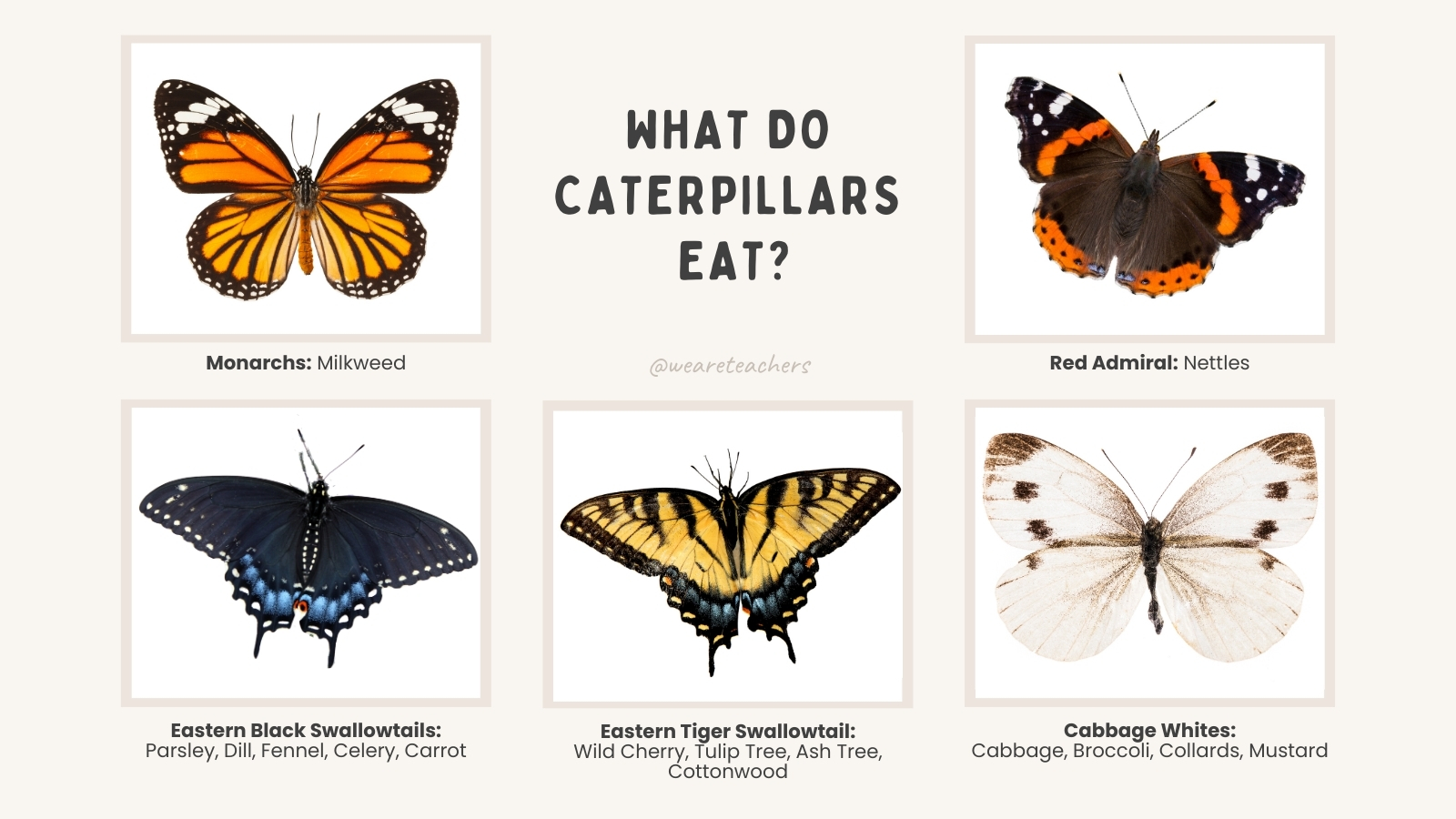
Caterpillars eat plants, mostly leaves. The caterpillars of different species each eat specific types of plants, called “host plants.” If a caterpillar eats the wrong kind of plant, it can die. However, this rarely happens, as caterpillars instinctively know which types of plants to eat.
Some examples of common caterpillar host plants include:
- Monarchs: Milkweed
- Eastern Black Swallowtails: Parsley, dill, fennel, celery, carrot
- Cabbage Whites: Cabbage, broccoli, collards, mustard
- Red Admiral: Nettles
- Eastern Tiger Swallowtail: Wild cherry, tulip tree, ash tree, cottonwood
How do caterpillars grow?
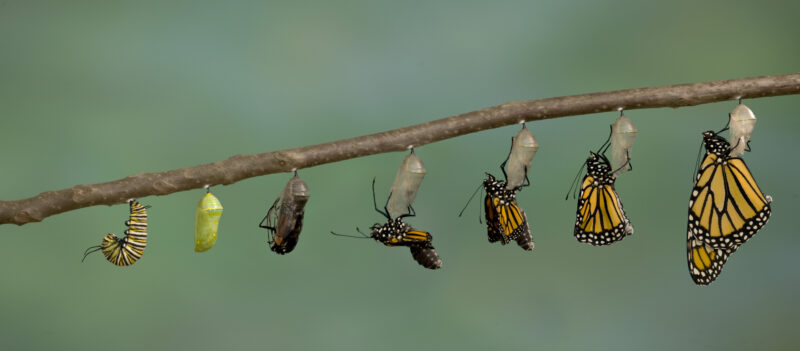
Like all insects, caterpillars have an exoskeleton. That means their outer covering stays the same size, even as they eat and grow bigger. A newly hatched caterpillar has very loose outer skin, which grows tighter as the caterpillar gorges itself. Eventually, that skin becomes too tight. It breaks open and the caterpillar sheds it, a process known as “molting.”
The caterpillar’s new skin is once again loose, allowing the larva to continue to eat and get bigger. It will need to molt several times before it’s big enough to move on to the next stage. We call the time between each molt an “instar.” A caterpillar can look pretty much the same each time it molts, or it can look very different. Butterfly experts can often tell which instar a caterpillar is in just by looking at its color, size, and patterns.
How long does it take a caterpillar to become a butterfly?
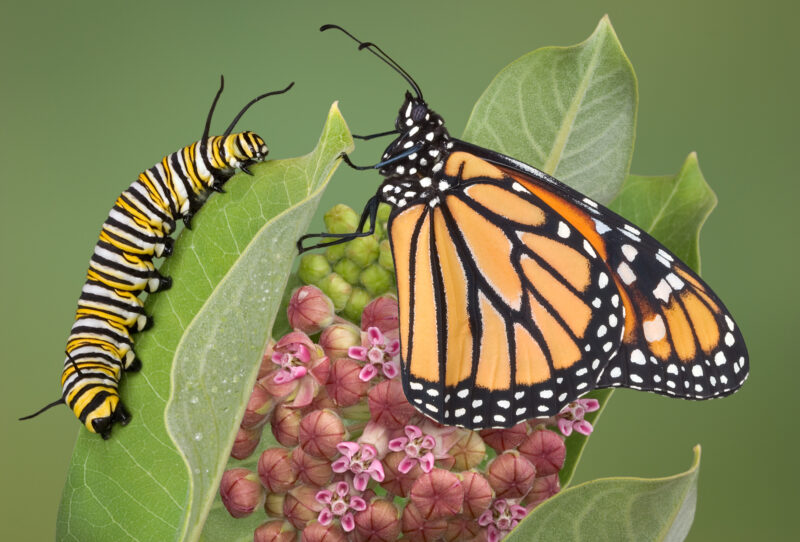
Most caterpillars feed, grow, and molt for about 10 days to two weeks. When they reach their maximum size, they might rest for a day or so before beginning to pupate. Then, they generally spend about two weeks as a chrysalis before emerging as an adult butterfly.
Do butterflies use a cocoon or a chrysalis?
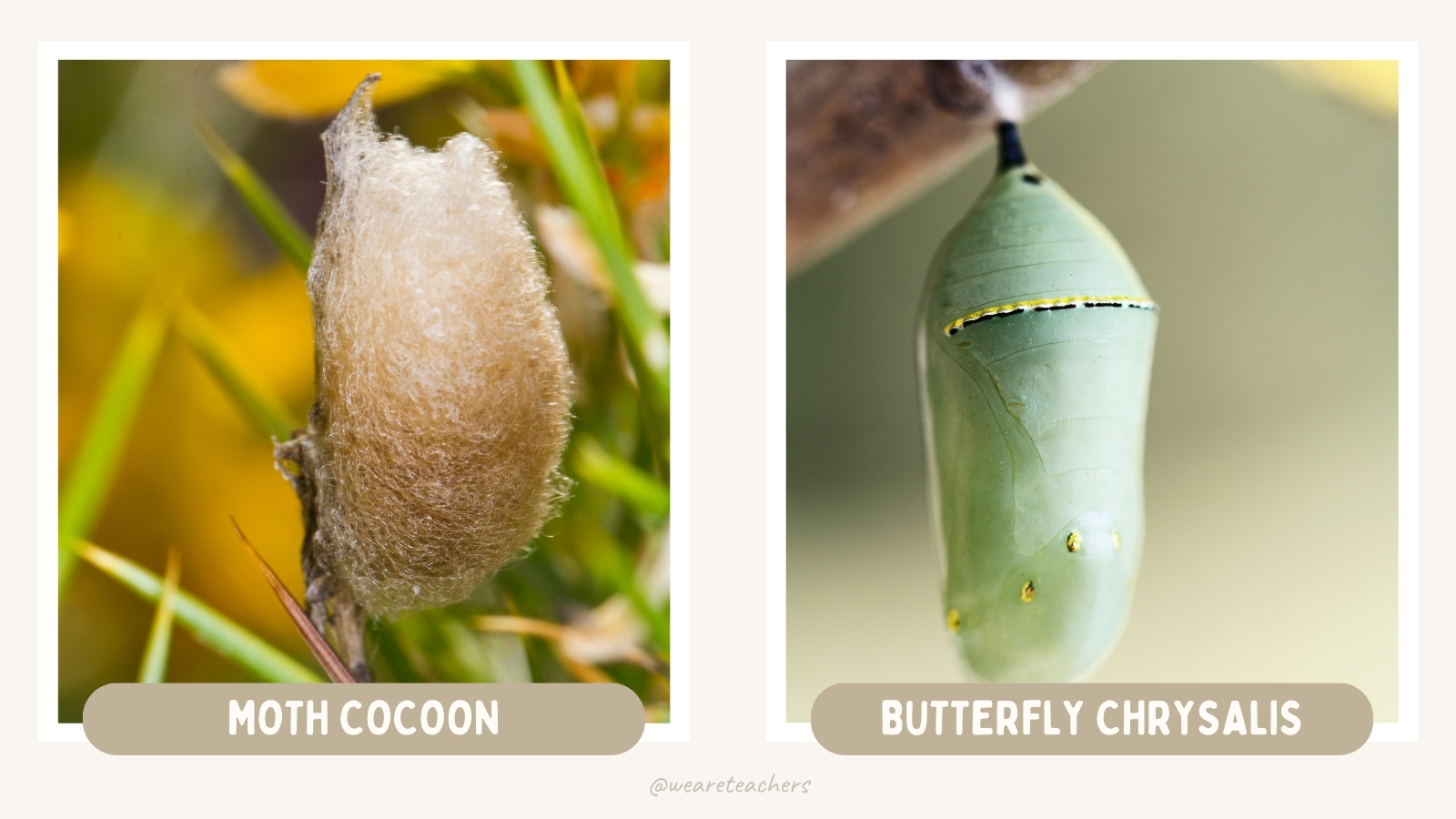
These two terms are often confused, but they mean different things. Butterflies don’t use a cocoon at all, but many moths do. Here’s the difference:
- Chrysalis: This is the term used to describe a butterfly’s pupa, the third stage of metamorphosis. In this stage, the caterpillar sheds its skin one last time. Then it undergoes a series of physical changes. When it’s ready, it breaks open the chrysalis to emerge as a butterfly.
- Cocoon: A cocoon is a separate structure that many moths weave around their pupa as they undergo the third stage of metamorphosis. They may spin a strong web of silk, wrapped around themselves thousands of times. Or they may use their silk to wrap themselves in leaves instead. Once they emerge from their pupa inside the cocoon, adult moths must then break out of the cocoon too.
What do butterflies eat?
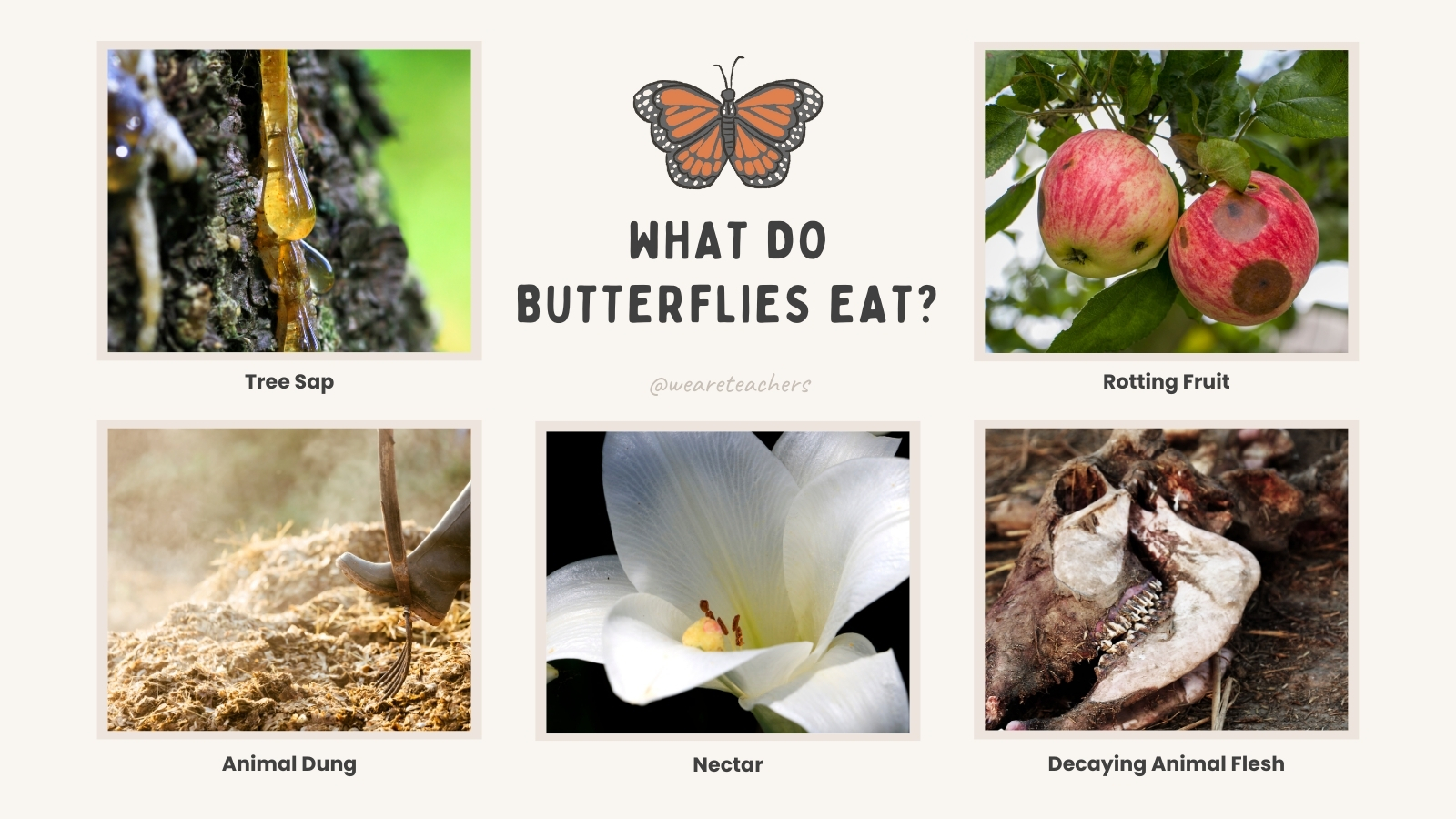
Butterflies eat a lot of nectar, the sweet, sugary substance many flowers produce. They don’t have mouths; instead they use their long proboscis to draw the nectar up into their bodies to be digested. When it’s not in use, the proboscis coils up so it’s not in the way.
Flowers aren’t the only butterfly food, though. Some species prefer other foods, like tree sap, rotting fruit, animal dung, and even carrion (decaying animal flesh)! Heliconius butterflies like the zebra longwing are also able to gather pollen on their proboscis and digest it for even more energy.
What is butterfly puddling?
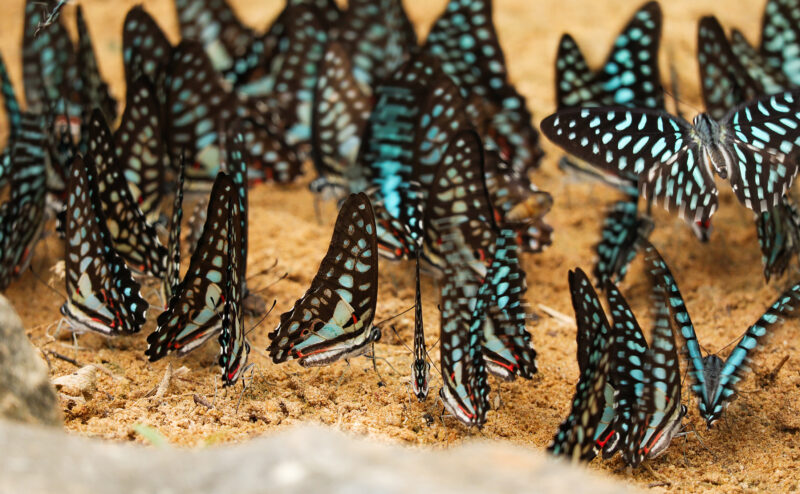
Sometimes you’ll see groups of butterflies gathered around a mud puddle on the ground. They’re there to drink the muddy water, which is a good source of the minerals they need. You might also see them puddling on wet sand or in a puddle on the sidewalk.
Do butterflies sleep?
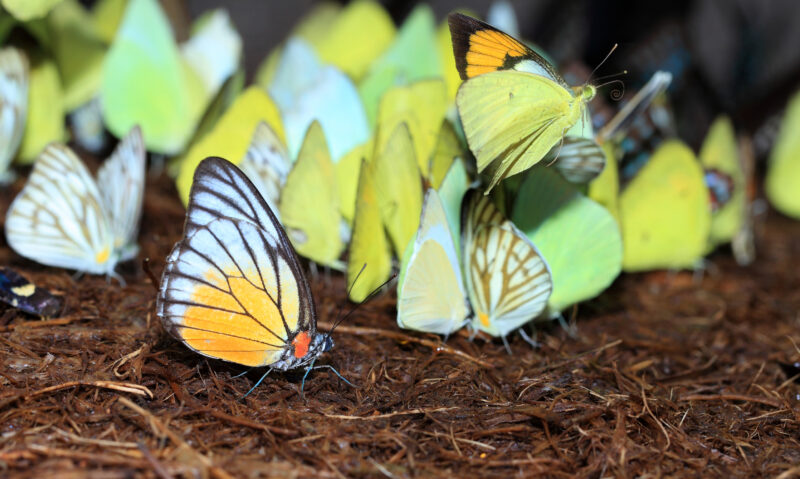
Butterflies are exothermic, meaning they get their warmth from the air around them. At night, when the sun goes down, most butterflies get too cold to fly. They use that time to rest, sometimes in large groups, waiting for the sun to return the next day and warm them back up again.
What do butterflies do in the winter?
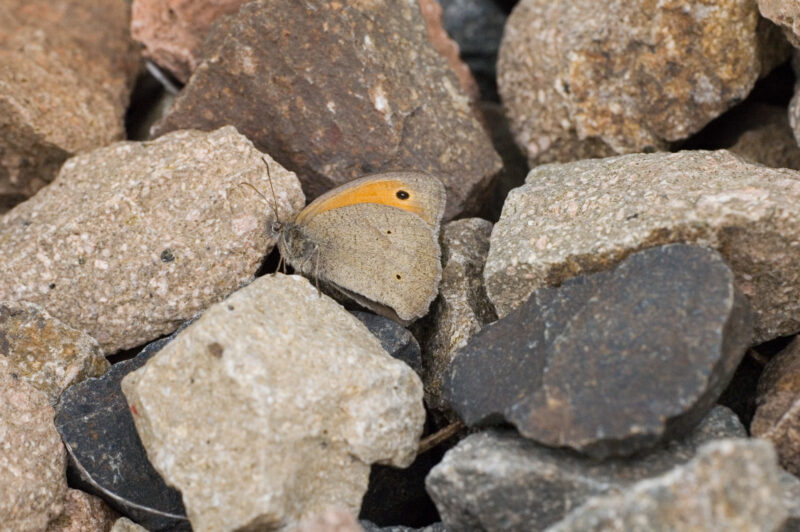
Butterflies have a few different ways to survive cold winter months. Not all of them fly south! In fact, many stay right where they are, in various parts of their life cycle.
- Egg: Some species overwinter as eggs, usually tucked into crevices in bark or under the soil. When spring begins and their host plants appear, they hatch and start feeding.
- Caterpillar: Other species spend the winter as caterpillars, often snuggled down in leaf litter beneath trees, or in the dirt. A few have the ability to freeze solid and thaw again in the spring!
- Chrysalis: Some species pupate in the fall and wait out the cold weather in their chrysalis. When flowers bloom in the spring, they emerge and look for mates.
- Adult: Many butterflies spend the winter tucked away in rock crevices or holes in trees. They enter a motionless stage called “torpor,” where their body shuts down and they don’t need to eat.
Do butterflies migrate?
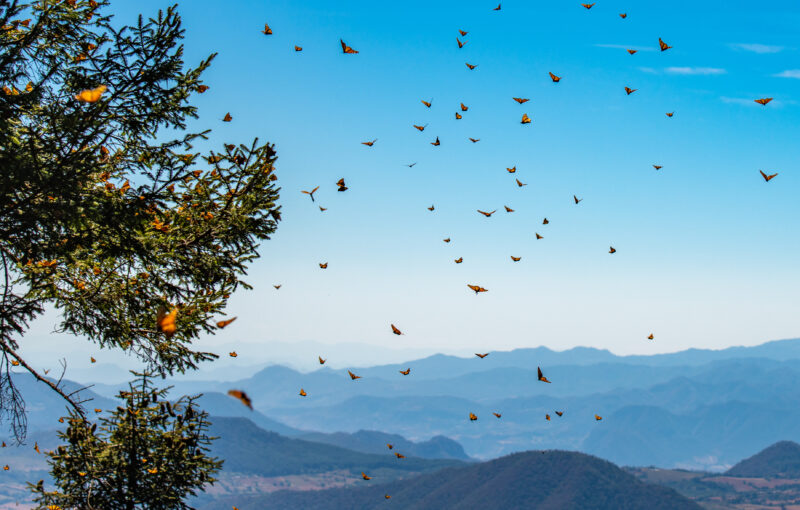
Some butterfly species do migrate. The most famous butterfly migration is the one undertaken each year by the central monarch population of the United States and Canada. They fly 3,000 miles south to overwinter on one of a few mountaintops in Mexico each winter.
Other butterflies move shorter distances, perhaps a few hundred miles or so south to avoid the worst of the cold. They may also migrate based on food availability, traveling in large groups toward wherever their preferred foods are most abundant.
How long does a butterfly live?
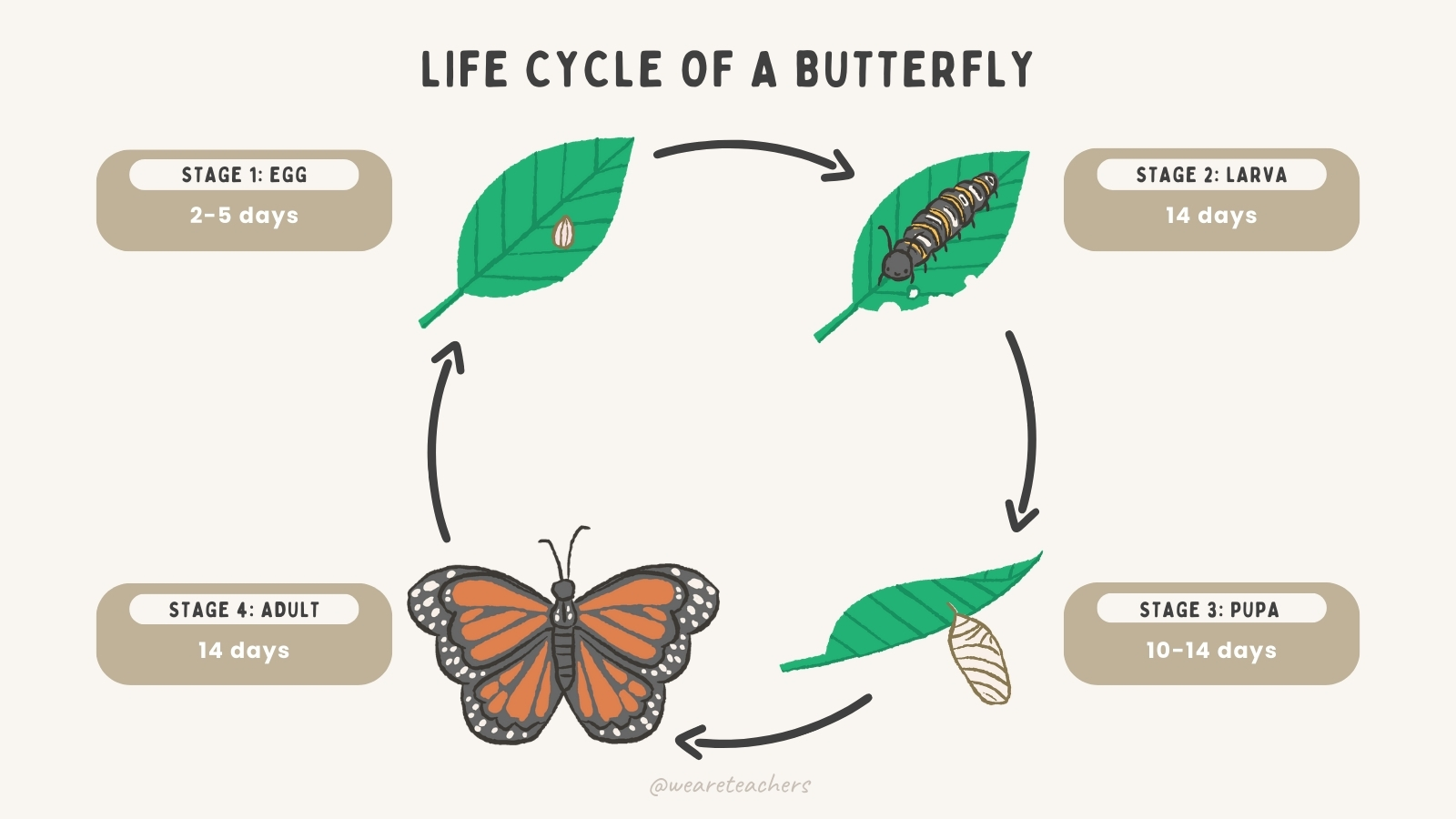
Most adult butterflies live only about two weeks. Those that overwinter as adults can live much longer, but they only spend a couple of weeks actively flying and eating. Heliconius butterflies are an exception—because they eat pollen in addition to nectar, they might live six to nine months.
Overall, a butterfly’s life cycle is pretty short: about two to five days as an egg, two weeks as a caterpillar, 10 days to two weeks as a chrysalis, and two weeks as an adult. This gives most species time to produce several generations each year.
Life Cycle of a Butterfly Vocabulary Words
Egg
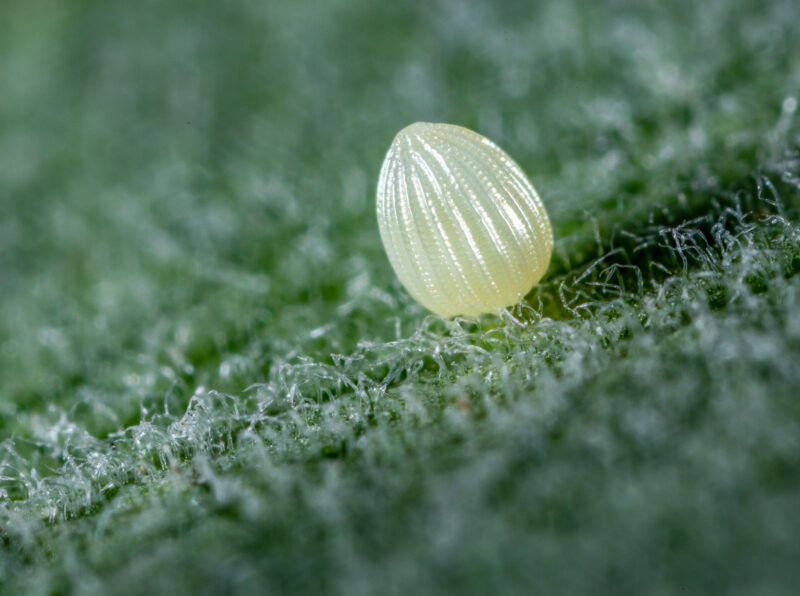
First stage in the butterfly’s life cycle. Female butterflies lay tiny eggs (around the size of a pinhead or smaller) on or near their host plants. Caterpillars usually hatch out a few days later.
Caterpillar
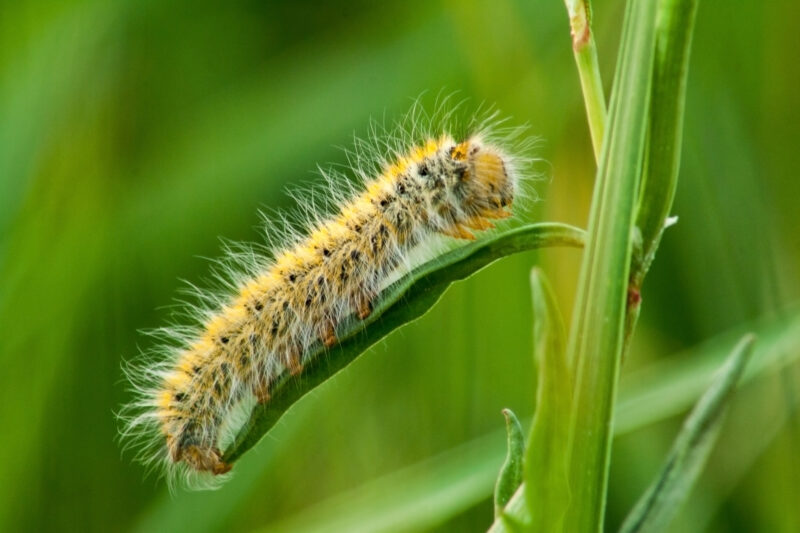
This is the second stage in a butterfly’s life cycle. They have segmented, worm-like bodies with three pairs of true legs and several pairs of appendages that are similar to legs, called “prolegs.”
Caterpillars can be very small (a centimeter or less) or grow to nearly the size of a hot dog! Each species of butterfly caterpillar looks different, and some are covered in spines or hairs.
Chrysalis
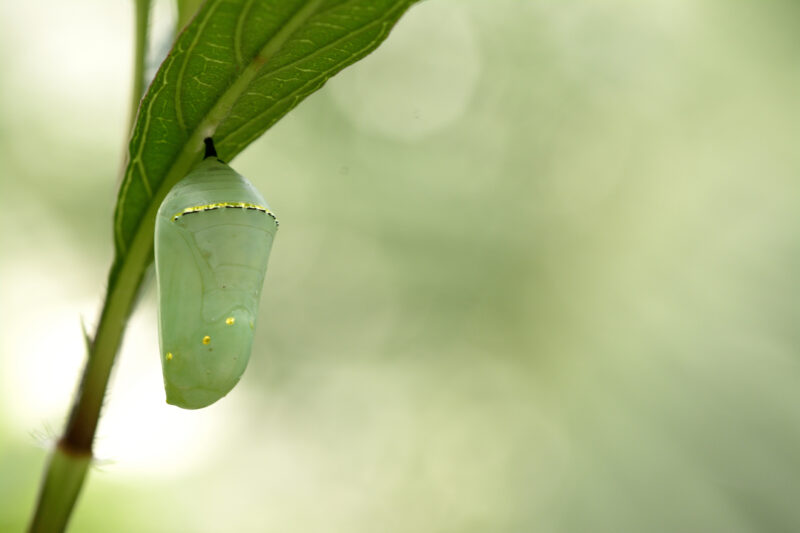
Pronounced “CRISS-uh-liss.” This is the third stage in a butterfly’s life cycle. A caterpillar sheds its skin one final time and forms a hard, thin skin about its body. Inside, the creature undergoes metamorphosis, developing a new body shape and wings.
Chrysalides (the plural form of this word) come in a variety of shapes and sizes. Some hang from branches, while others are wrapped in leaves or buried in the ground.
Host Plant
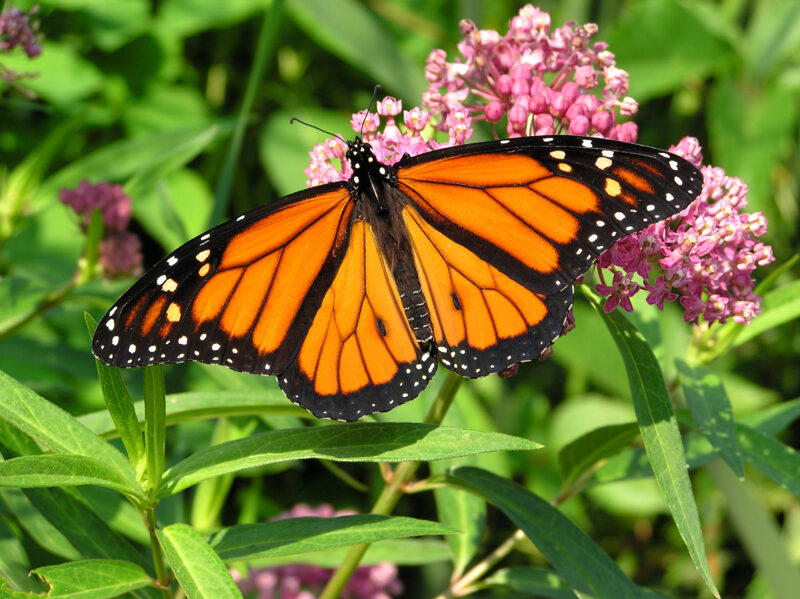
Each type of butterfly caterpillar eats only specific plants, known as their host plants. For instance, monarch butterfly caterpillars only eat milkweed species. Some caterpillars can eat many types of plants—painted lady butterflies have at least 100 known host plants, including asters, hollyhocks, thistles, and sunflowers.
Instar
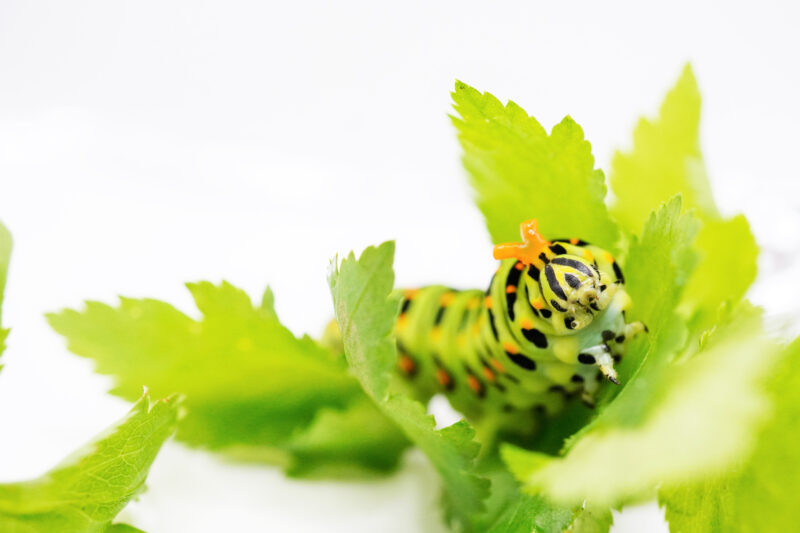
As a caterpillar eats and gets bigger, it outgrows its skin and sheds it several times (molts). The time between each of these molts is known as an instar. Most caterpillars have about five different instars.
A caterpillar can look very different each time it sheds its skin, so you may see pictures labeled “Black swallowtail caterpillar, third instar.”
Larva
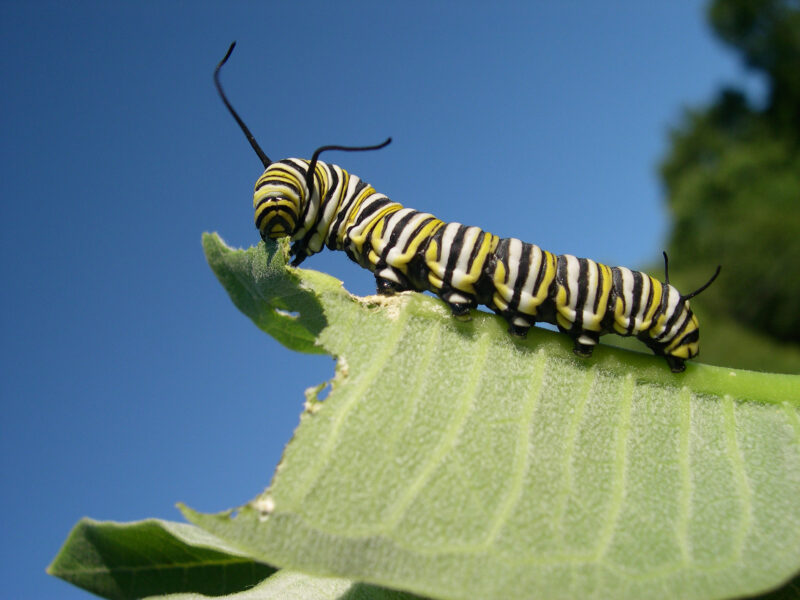
This is the word used to describe the second stage of complete metamorphosis in insects. In butterflies, the larva is called a caterpillar. (Plural: larvae)
Metamorphosis
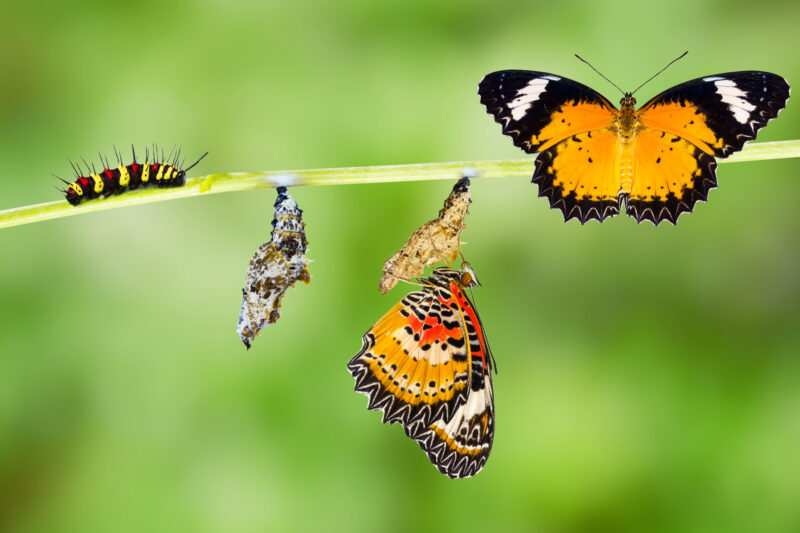
Pronounced “met-uh-MORE-feh-siss.” It describes the process by which some animals change dramatically to become adults. It’s especially common in insects, but some other animals experience metamorphosis, including frogs.
Butterflies and moths undergo complete metamorphosis, which has four distinct stages: egg, larva, pupa, and adult.
Migrate/Migration
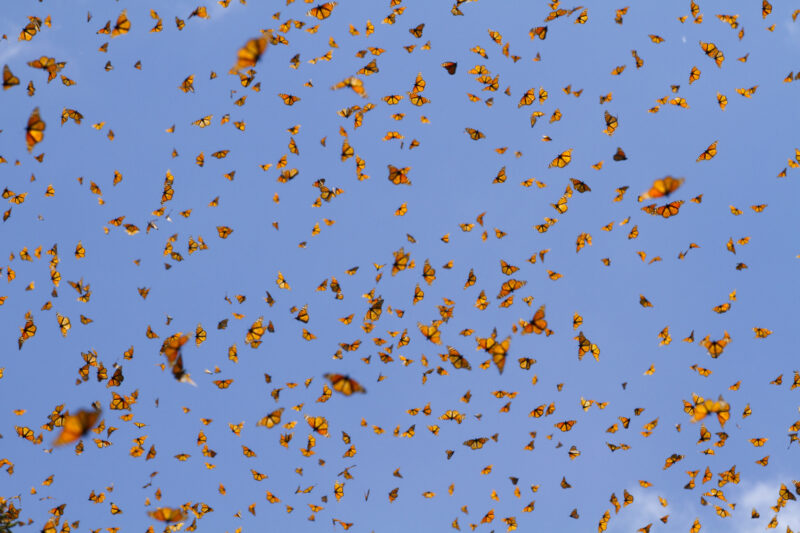
This word is used to describe the movement of large groups of animals from one place to another, usually seasonally. Some butterflies migrate during the winter months.
Monarchs are famous for their winter migration, in which the central population of monarch butterflies travels up to 3,000 miles south to overwinter on one of several mountaintops in Mexico.
Molt

When an animal molts, it sheds its skin, feathers, or fur. Caterpillars molt several times as they grow, shedding their old skin.
Oviposit
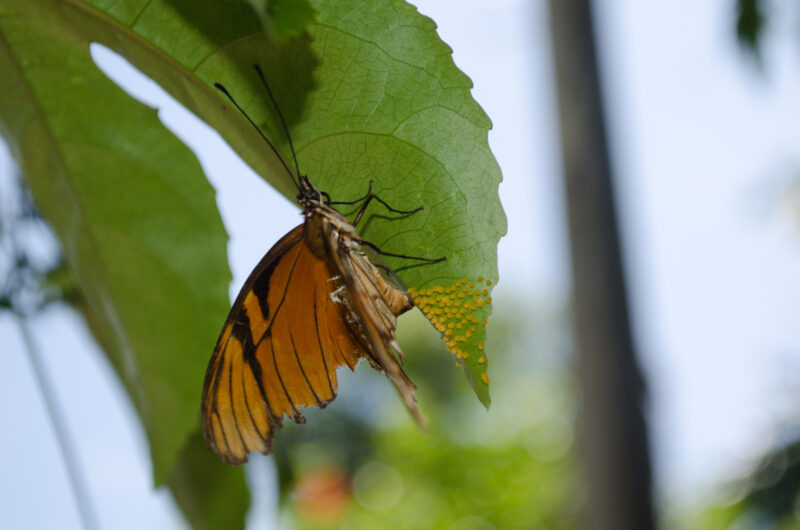
This is another word for laying eggs, but it’s usually only used for insects. For instance, “The black swallowtail butterfly oviposits on parsley and dill.” It’s pronounced “OH-vuh-pah-sit.”
Pupa
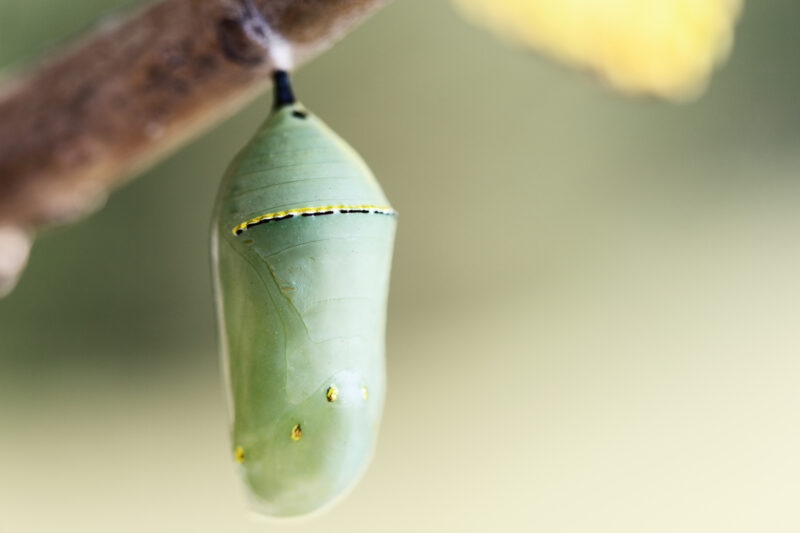
This is the word used to describe the third stage of complete metamorphosis in insects. In butterflies, the pupa (pronounced “PEW-pah”) is called a chrysalis. (Plural: pupae)
Pupate
When a caterpillar is ready to change into a butterfly, it sheds its skin one final time and becomes a chrysalis. The word used to describe that process is pupate. In other words, a caterpillar pupates into a chrysalis when it’s done eating and growing. (Say “PEW-pate.”)
Butterfly Life Cycle Activities
Free Butterfly Life Cycle Worksheet Bundle
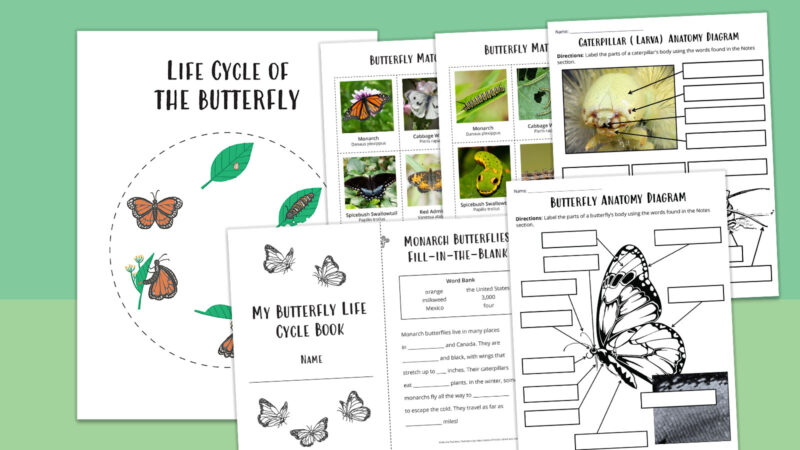
In our free printable butterfly life cycle worksheet bundle you’ll find an interactive booklet, a matching game, anatomy diagrams, and an easy paper plate craft.
Get your free printable butterfly life cycle worksheet here.
Experience the life cycle of a butterfly firsthand
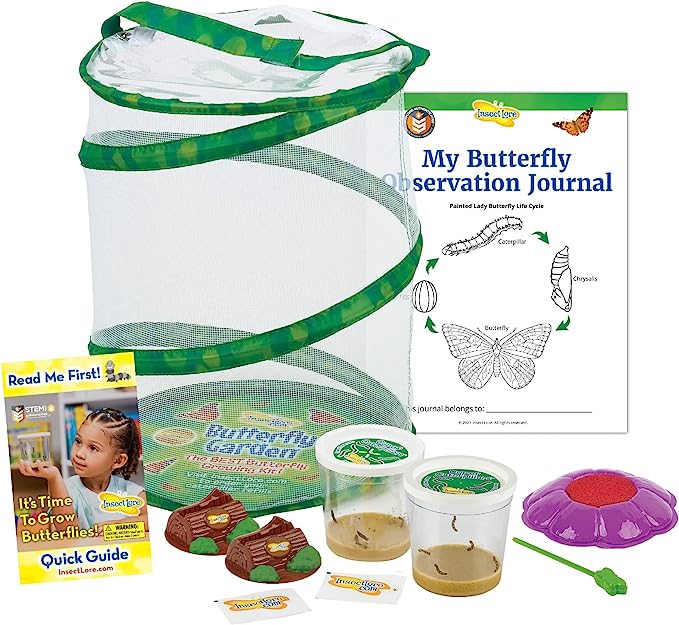
This is a classic elementary school activity, and most people use an all-in-one kit to make things easier. Kids are always amazed to observe hatching eggs, growing caterpillars, and the magic of metamorphosis in real life!
Find our favorite insect life cycle kits for home or classroom here.
Plant a butterfly garden at school
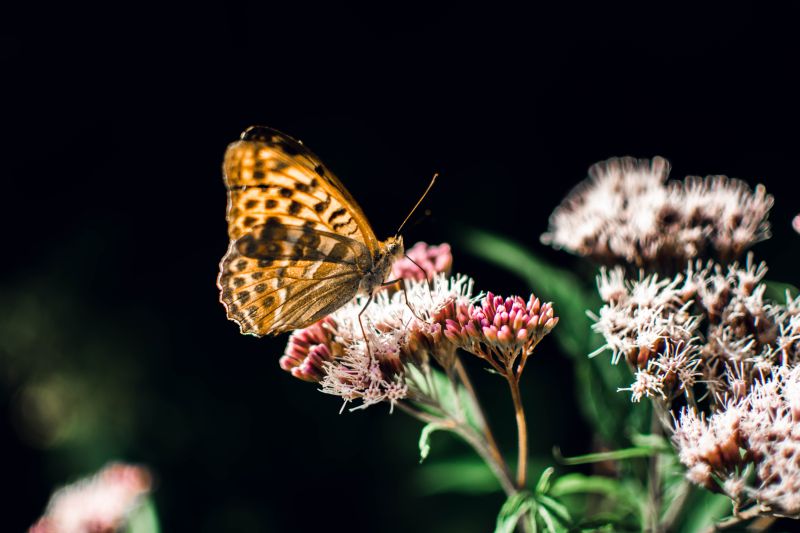
One downside to butterfly kits is that they use a prepared food substitute rather than a butterfly’s host plants. Emphasize the importance of pollinator gardens and providing food for wildlife by planning a butterfly garden at your school. Tip: Look into the Seeds for Education grant program for possible funding opportunities.
Learn how to set up a butterfly garden at school here.
Use pasta to represent the butterfly life cycle stages
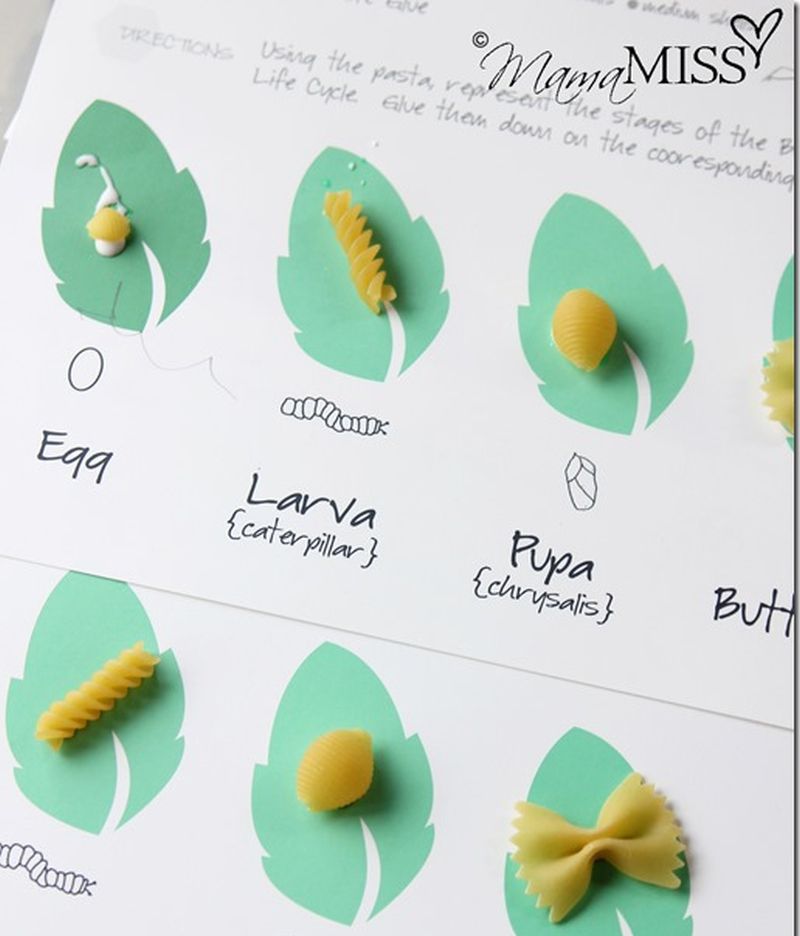
Raid the grocery store and pick up a few different kinds of pasta. Then, use them to represent eggs, larvae, pupae, and adult butterflies. Kids can paint them or leave them plain.
Learn more: Pasta Butterfly Life Cycle at Mama Miss
Stick a magnetic butterfly life cycle on your whiteboard
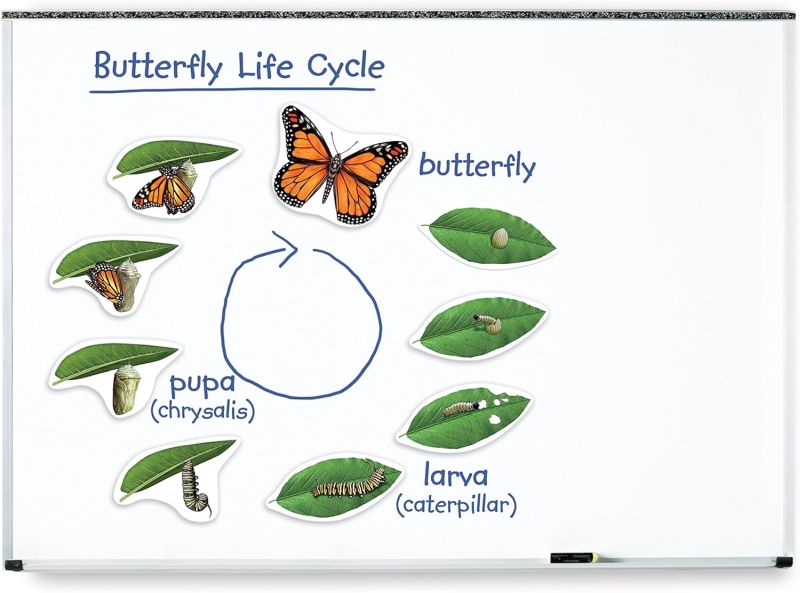
These magnets are oversized, making it easy to share the various stages with your students. The set includes an activity guide too.
Buy it: Learning Resources Butterfly Life Cycle Magnets at Amazon
Videos About the Butterfly Life Cycle for Kids
Butterfly: A Life by National Geographic
This stunning footage gives you a close-up look at the whole process of metamorphosis in just a few minutes.
How Does a Caterpillar Become a Butterfly?
SciShow’s video is perfect for the younger crowd, complete with vocabulary word definitions, photos, and more.
Time-Lapse Butterfly Metamorphosis
There’s no more fascinating part of a butterfly’s life than when it pupates from caterpillar to chrysalis and then emerges later as a butterfly. See it all in this time-lapse footage.
Butterfly Books for Kids
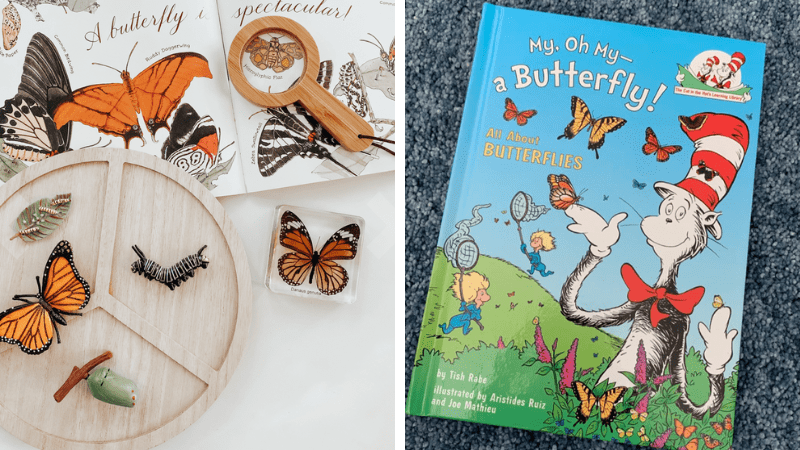
Reading about the life cycle of a butterfly is always fascinating. These top butterfly books for kids are perfect for story time, bedtime, or anytime.
- 16 Butterfly Books Worth Fluttering For
- 35 Easy Very Hungry Caterpillar Activities, Art Projects, and Crafts
Get Your Free Butterfly Life Cycle Google Slides
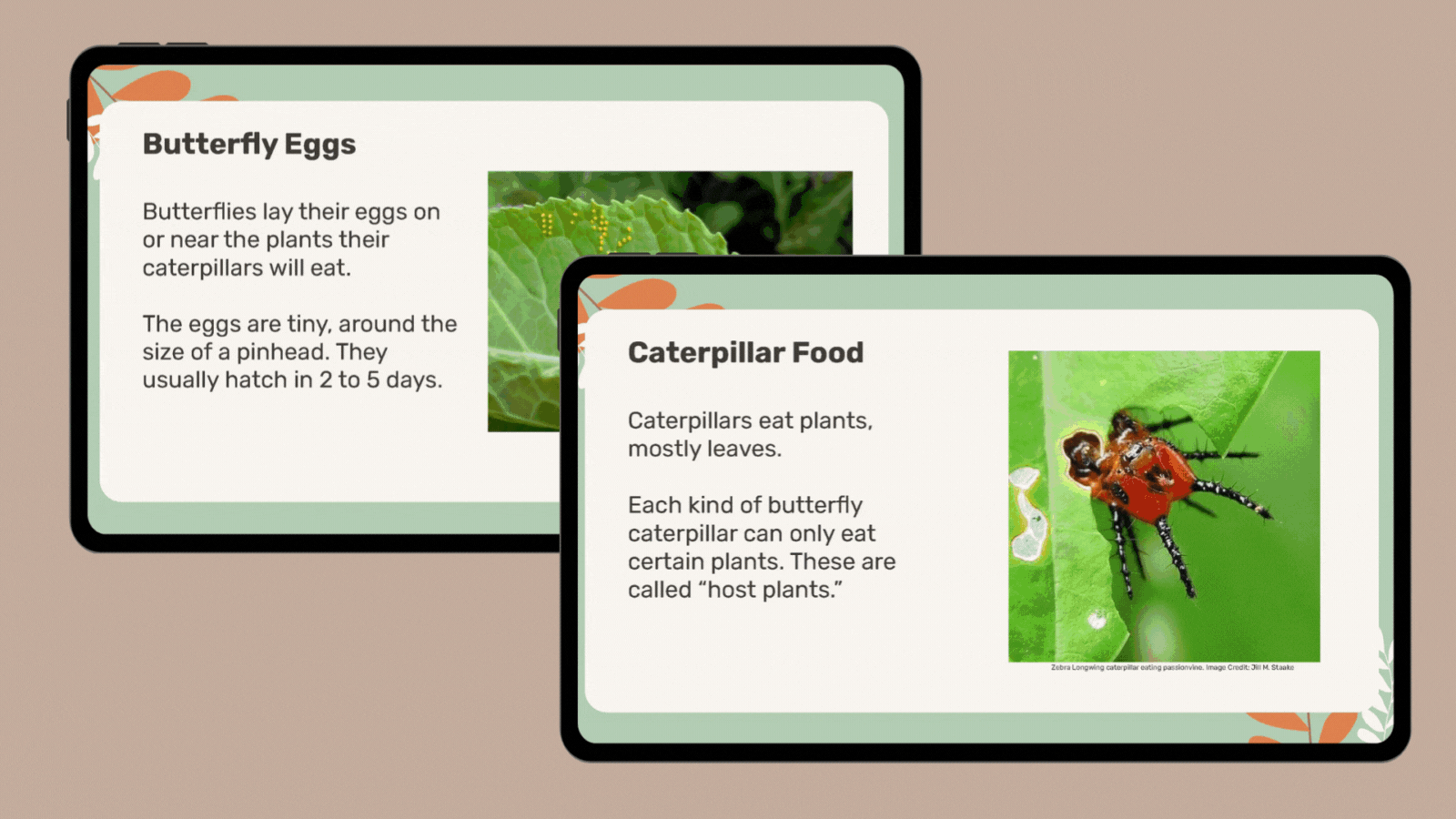
Just fill out the form on this page get your free Butterfly Life Cycle Google Slides! They include all the information on this page formatted in kid-friendly slides you can use in your classroom.
